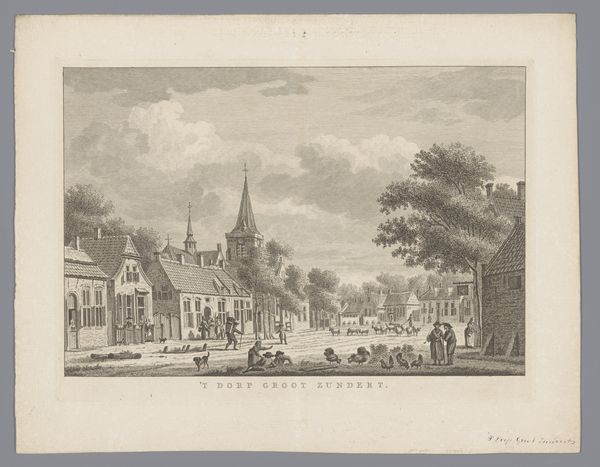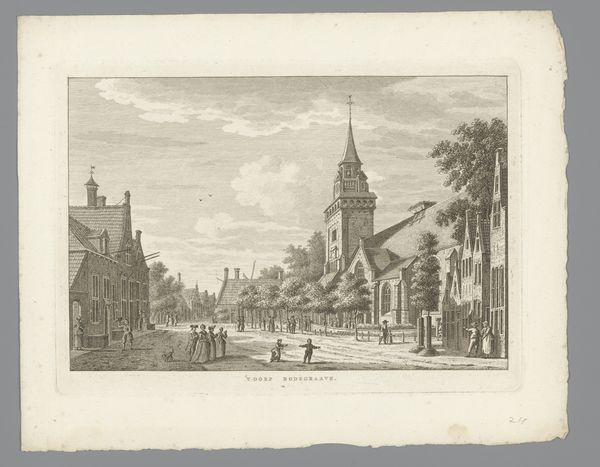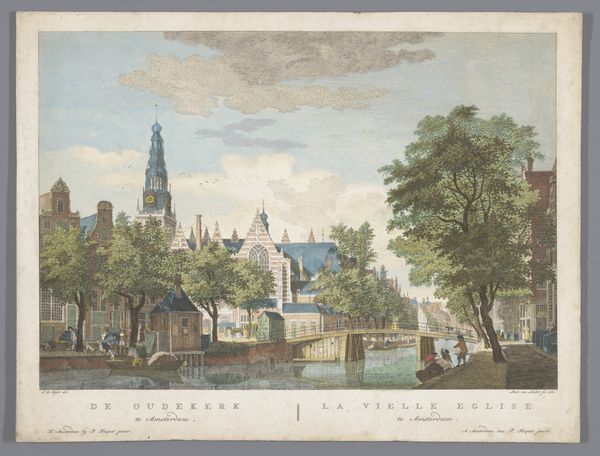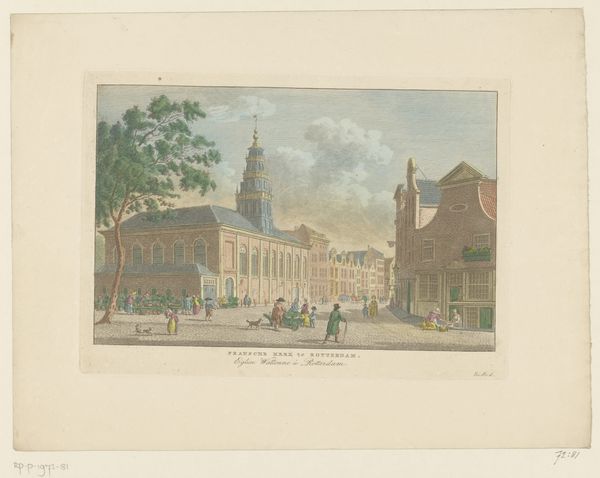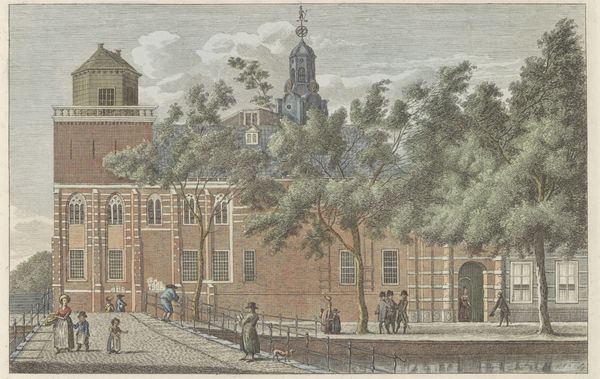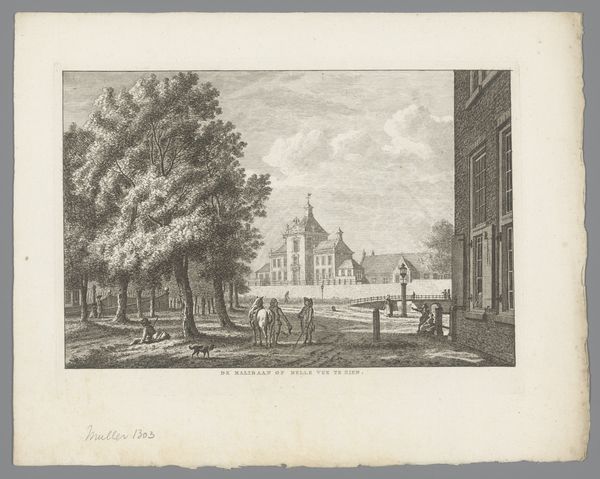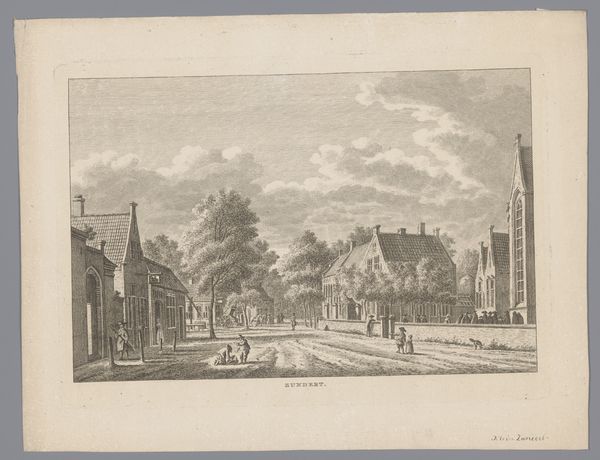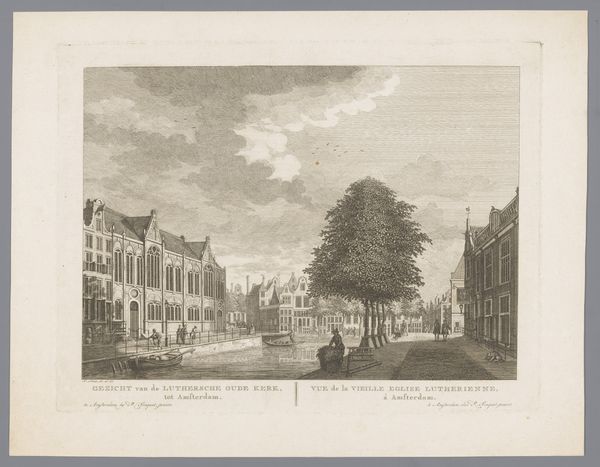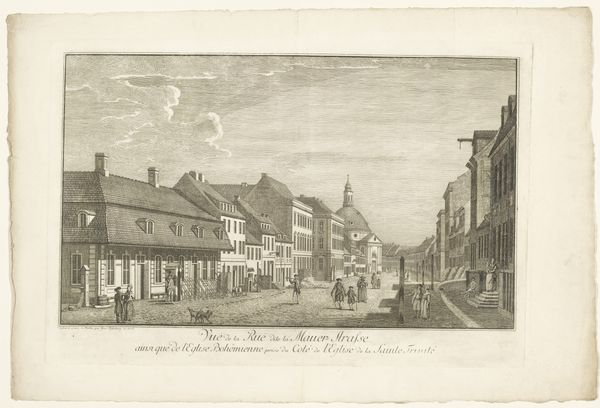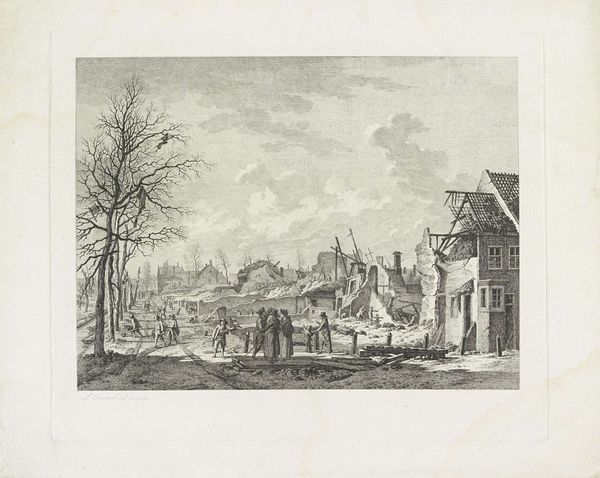
print, engraving
#
dutch-golden-age
# print
#
cityscape
#
genre-painting
#
engraving
#
rococo
Dimensions: height 266 mm, width 415 mm
Copyright: Rijks Museum: Open Domain
Editor: So, this print is called "Gezicht op de Dagelijkse Groenmarkt te Den Haag," made in 1764 by Paulus Constantijn la Fargue. It looks like an engraving. I find the composition really charming – it feels like a frozen moment of everyday life. What’s your take? Curator: This piece provides a fascinating glimpse into the urban landscape and social life of The Hague in the 18th century. What I see here isn’t just a marketplace, but a carefully constructed presentation of civic order and social hierarchies. Look at how the buildings - the Hal, Stadhuis, Groote Kerk, dominate the background, establishing the power structures framing the market. Notice how the light delicately illuminates the buildings in the back in contrast to the immediate, bustling foreground. Editor: Interesting, so it's less about the actual market and more about the institutions looming over it? Curator: Precisely. The placement and relative scale subtly reminds the viewer of these institutional presences. The Groenmarkt becomes a stage upon which daily life unfolds under the watchful eye of the church and state. How does understanding the date impact how you read this image? Editor: Since it’s 1764, it would have been created during The Dutch Golden Age, right? Curator: Indeed! You might associate the style with Rococo, with all of the flourishes in the architecture, and bustling marketplace, but Dutch paintings like this during the time reflect a desire to show public life. Does knowing it was for public life help clarify it at all? Editor: It helps solidify how important it was for this market scene to be depicted in a way that communicated order, and not chaos, I think. Curator: Exactly. It speaks volumes about the values and ideals that the artist, and likely the patrons who commissioned such works, wished to project to the broader public. Editor: That really reframes the image for me! I was initially focused on the 'genre' scene element, but now I see the artist used the people, the small market stalls and city buildings to broadcast societal power! Curator: Yes! These works weren't simply records of a time. They actively participated in constructing a narrative. A powerful reminder of art’s role within a specific cultural context.
Comments
No comments
Be the first to comment and join the conversation on the ultimate creative platform.

